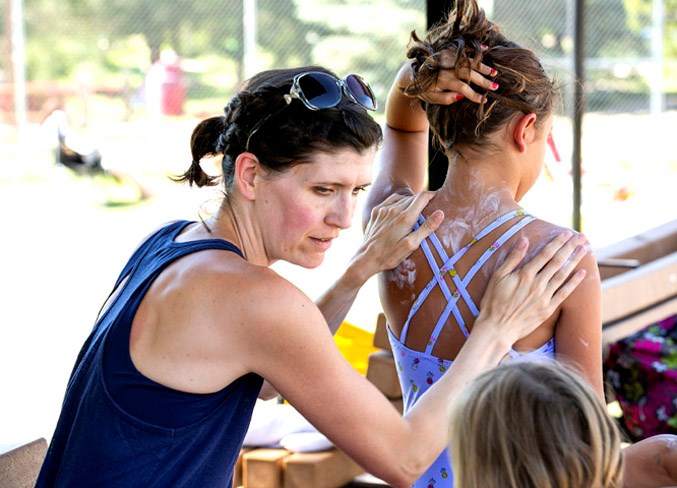Sunny skies bring people outside; while it may seem like common sense simply to apply sunscreen, there are some misconceptions when it comes to taking the proper precautions from the sun.
For instance, a common fallacy is sunscreens with higher SPF provide greater protection. People might also believe that applying a high SPF sunscreen once will protect them all day long. In fact, these notions are simply not true. If you’re not properly applying sunscreen, you’re putting your skin at risk.
What the heck is SPF?
SPF stands for “sun protection factor.” It’s calculated by examining the dose of UV radiation that’s required to cause a minimal sunburn when you’re protected with sunscreen versus when you’re not. For example, an SPF of 30 will take 30 times the amount of UV radiation to cause a sunburn compared to when you’re not wearing that sunscreen.
“The SPF scale, it’s not a linear scale,” said Corey Jefferies, a Primary Care Network pharmacist. “So if you’re going from 30 to 60, you’re not getting double the protection. There’s not any incremental benefit in terms of how much sun protection you’re getting and no SPF will provide you with 100 per cent protection.”
Generally, an SPF of 15 will block or absorb about 94 per cent of harmful radiation, an SPF of 30 will see about 97 per cent and anything over an SPF of 50 will likely max out at about 98 per cent. Sunscreen with an SPF of at least 30 is the standard recommendation from Health Canada, Alberta Health and the Canadian Dermatology Association.
The sun’s rays emit both UVA and UVB radiation. Typically, an SPF number will refer to protection from UVB rays. UVB waves cause sunburns, while UVA can cause premature aging symptoms like wrinkles or spots. In the worst-case scenario, overexposure to the sun’s rays can be responsible for some cancers as well. Jefferies said it’s important to pick a sunscreen that has a “broad spectrum” label on it, which protects from both waves of radiation.
Proper application
Jefferies said that common issues with sunscreen performance often come from application errors.
“If you’re putting on half the recommended amount, it can substantially reduce the SPF value. So if you’re putting on half, you can divide that SPF value by about a third.”
Jefferies said he likes to use the “teaspoon rule” when applying sunscreen. He said this means you’d use about one teaspoon of sunscreen to cover the face and neck, one teaspoon for each arm, two teaspoons for the front of the torso, two teaspoons for the back and about another two for each leg and the tops of the feet.
It’s recommended to reapply the sunscreen at least every two hours or after any activity that may wash away the sunscreen. Jefferies said that higher SPFs can give people a false sense of security because they tend to be less diligent with reapplication, or they don’t use as much sunscreen because they assume they are better protected by a higher SPF. Ultimately, sunscreen should be reapplied frequently throughout the day regardless of SPF.
He said best practices include applying sunscreen about 15 to 20 minutes prior to going into the sun because it takes time to absorb into your skin and be effective. Some people may have skin reactions to the chemicals in sunscreens, so Jefferies recommends testing an unfamiliar product on a small area of skin before applying it to the entire body.
Like any health care product, the best way to be sure you’re safe is by following instructions on the label.
General sun safety tips:
• Wear protective clothing
• Wear a sun hat
• Wear sunglasses
• Stay out of the sun when it’s at its most intense (between 10 a.m. and 3 p.m.)
• Apply and re-apply sunscreen




